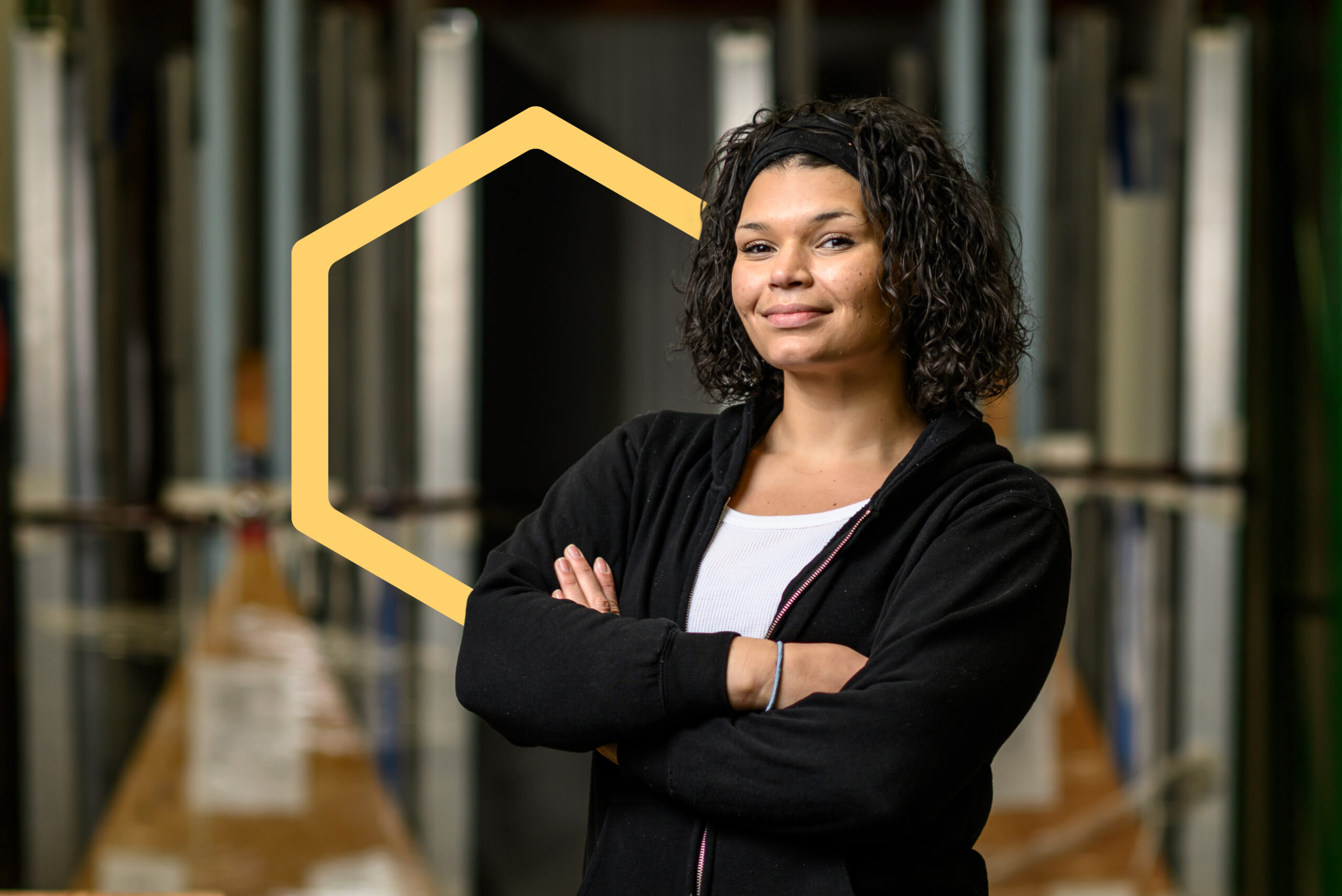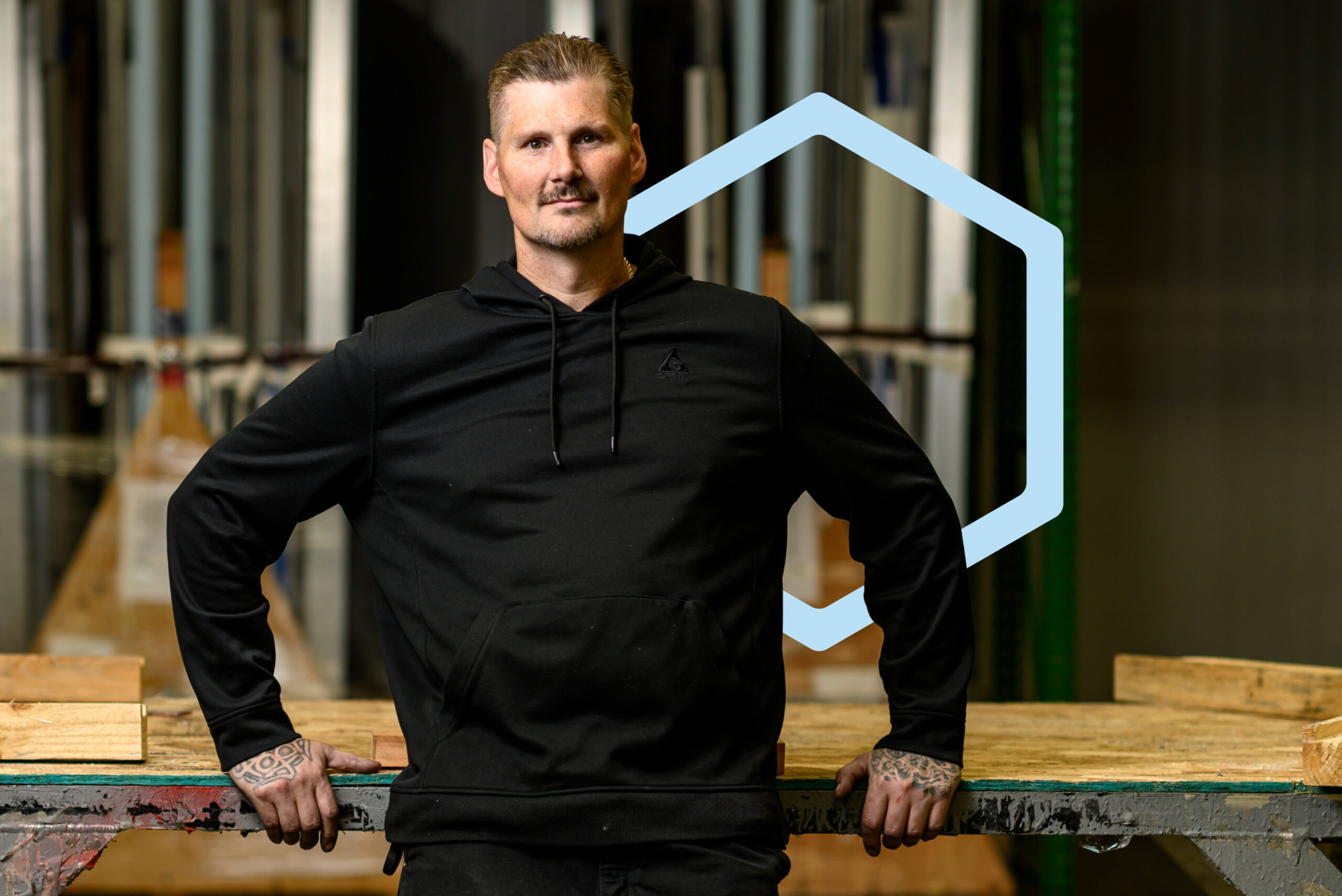Pallet’s Role in Creating Positive Housing Transitions
March 20, 2024
Data collected from sites across the country shows how the Pallet village model helps residents transition to more permanent solutions.

Every person’s journey to permanent housing is different. The trauma of displacement means every individual encounters their own barriers to finding a stable place to call home. And once someone exits this continuum of care that includes congregate and non-congregate shelter, supportive housing, and other forms of assistance, their success story often goes undocumented.
Although it is challenging to track a person’s progress through the housing continuum with accuracy and consistency, it is crucial to seek out this information and ensure our approach is effective. Pallet’s mission is to provide the supportive environment needed for displaced populations to move onto permanent housing, and this data tells us if our model is working and how we can improve our methods to best suit the needs of every village resident.
Establishing an Open Dialogue is Key
Our partnerships with village service providers are essential in both tracking residents’ progress and gathering context for what resources are needed in each unique community. Site locations across North America are faced with specific root causes of displacement, meaning there is no “one size fits all” solution. This is why once a village is built, our work isn’t finished: details like ongoing operations, maintenance needs, and supportive service provision all tell a distinct story that informs the future of Pallet.
Survey responses from village operators show that on an average day, 10 people move from an existing Pallet village to permanent housing. This tells us that in a broad sense, the pairing of dignified shelter with wraparound services like food and water, hygiene facilities, healthcare, counseling, and employment placement programs are effective in equipping residents with the tools necessary to transition to more permanent solutions. This trend works out to 3,200 expected transitions per year.

Measurable Success
Our ongoing relationships with service providers also bring to attention success stories like Tim’s, who found his own apartment after living in the Salvation Army Safe Outdoor Space in Aurora, CO. Connections to a state-sponsored pension program via onsite staff and help from the Aurora Housing Authority were instrumental in leading Tim to his own home, showing an effective model tailored to the individual needs of each resident.
Vancouver, WA’s approach to address their homelessness crisis, centered on a robust scope of resident services, has also proven success in helping vulnerable individuals on the path to housing. Their first Safe Stay community, The Outpost, reported 30 people moving to permanent housing since opening. Meanwhile, Hope Village achieved 14 transitions in their first year of operations, attributing resident success to a compassionate, healing communal environment with resources including meals, food bank deliveries, clothing, transportation, and assistance obtaining legal identification.
A Way Forward
Aurora and Vancouver are just two examples of sites that have experienced success with the Pallet village model. We believe that while interim shelter is a crucial part in creating safe spaces for vulnerable people to stabilize, it takes a breadth of additional support. This is why we view our product development through the lens of trauma-informed design and lean on our lived experience workforce for perspective: to ensure we are continuing to refine our mission to serve displaced communities to the best of our ability.
By investing in this approach and making concerted efforts toward inclusive wraparound services, any city has the potential to provide displaced populations with pathways to stable and permanent housing.


